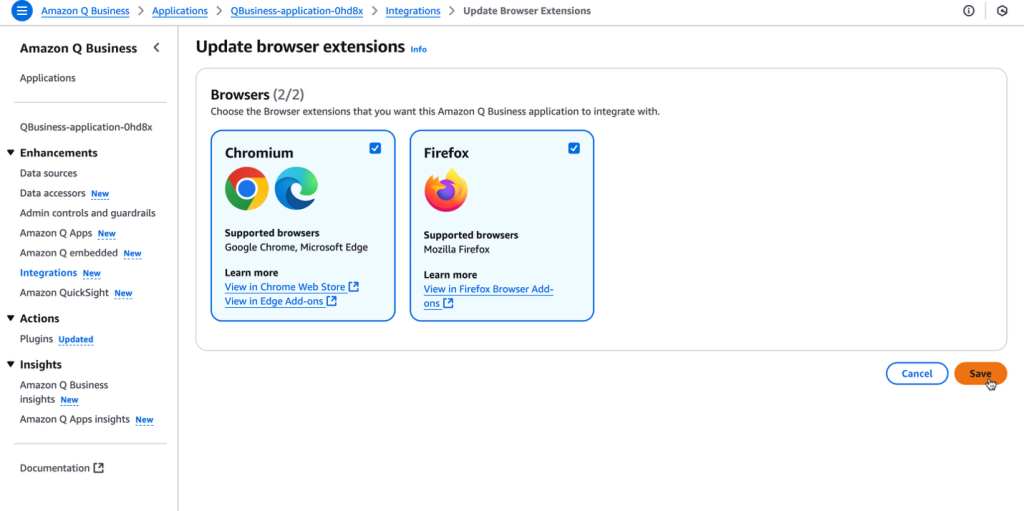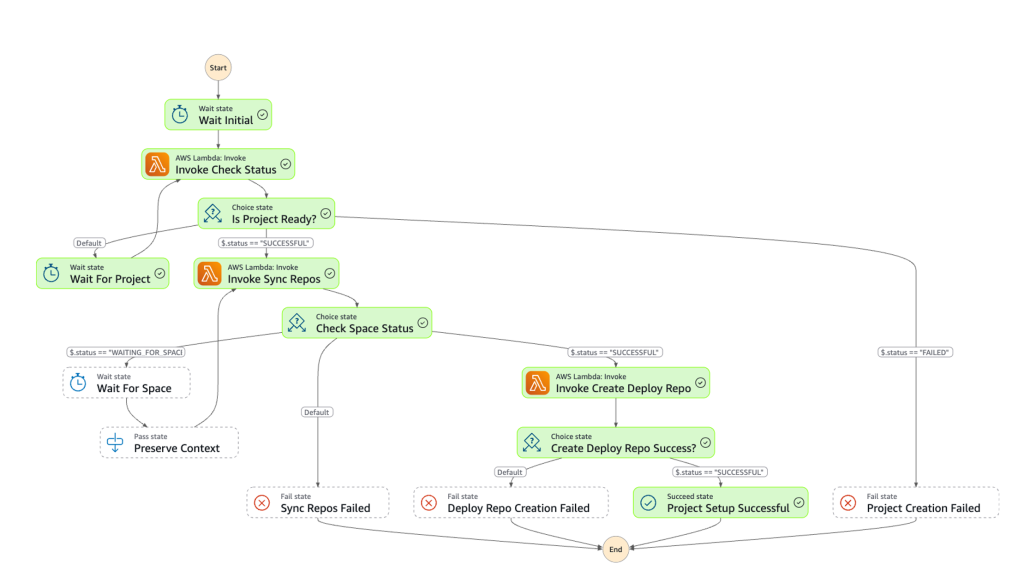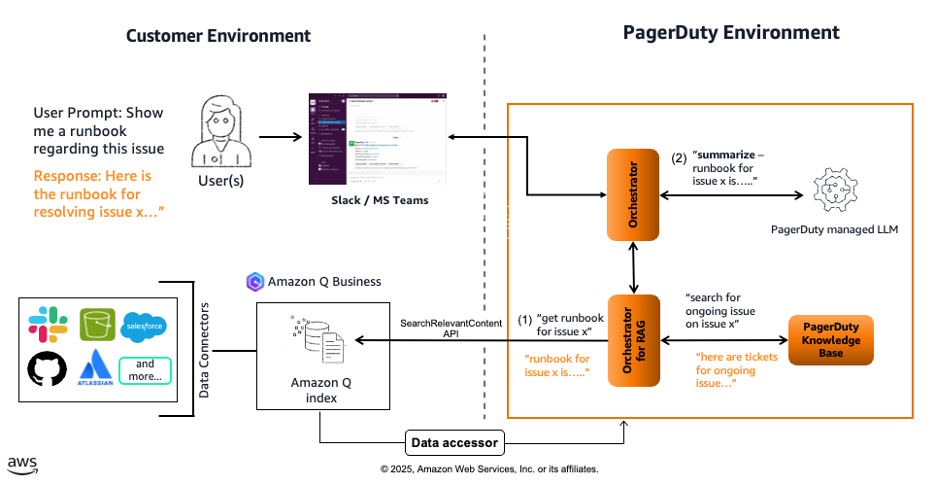Artificial Intelligence
Tag: AIML
Supercharge your organization’s productivity with the Amazon Q Business browser extension
In this post, we showed how to use the Amazon Q Business browser extension to give your team seamless access to AI-driven insights and assistance. The browser extension is now available in US East (N. Virginia) and US West (Oregon) AWS Regions for Mozilla, Google Chrome, and Microsoft Edge as part of the Lite Subscription.
Automate AIOps with SageMaker Unified Studio Projects, Part 2: Technical implementation
In this post, we focus on implementing this architecture with step-by-step guidance and reference code. We provide a detailed technical walkthrough that addresses the needs of two critical personas in the AI development lifecycle: the administrator who establishes governance and infrastructure through automated templates, and the data scientist who uses SageMaker Unified Studio for model development without managing the underlying infrastructure.
Automate AIOps with Amazon SageMaker Unified Studio projects, Part 1: Solution architecture
This post presents architectural strategies and a scalable framework that helps organizations manage multi-tenant environments, automate consistently, and embed governance controls as they scale their AI initiatives with SageMaker Unified Studio.
End-to-End model training and deployment with Amazon SageMaker Unified Studio
In this post, we guide you through the stages of customizing large language models (LLMs) with SageMaker Unified Studio and SageMaker AI, covering the end-to-end process starting from data discovery to fine-tuning FMs with SageMaker AI distributed training, tracking metrics using MLflow, and then deploying models using SageMaker AI inference for real-time inference. We also discuss best practices to choose the right instance size and share some debugging best practices while working with JupyterLab notebooks in SageMaker Unified Studio.
Extend your Amazon Q Business with PagerDuty Advance data accessor
In this post, we demonstrate how organizations can enhance their incident management capabilities by integrating PagerDuty Advance, an innovative set of agentic and generative AI capabilities that automate response workflows and provide real-time insights into operational health, with Amazon Q Business. We show how to configure PagerDuty Advance as a data accessor for Amazon Q indexes, so you can search and access enterprise knowledge across multiple systems during incident response.
A generative AI prototype with Amazon Bedrock transforms life sciences and the genome analysis process
This post explores deploying a text-to-SQL pipeline using generative AI models and Amazon Bedrock to ask natural language questions to a genomics database. We demonstrate how to implement an AI assistant web interface with AWS Amplify and explain the prompt engineering strategies adopted to generate the SQL queries. Finally, we present instructions to deploy the service in your own AWS account.
Responsible AI in action: How Data Reply red teaming supports generative AI safety on AWS
In this post, we explore how AWS services can be seamlessly integrated with open source tools to help establish a robust red teaming mechanism within your organization. Specifically, we discuss Data Reply’s red teaming solution, a comprehensive blueprint to enhance AI safety and responsible AI practices.
Accelerate your Amazon Q implementation: starter kits for SMBs
Starter kits are complete, deployable solutions that address common, repeatable business problems. They deploy the services that make up a solution according to best practices, helping you optimize costs and become familiar with these kinds of architectural patterns without a large investment in training. In this post, we showcase a starter kit for Amazon Q Business. If you have a repository of documents that you need to turn into a knowledge base quickly, or simply want to test out the capabilities of Amazon Q Business without a large investment of time at the console, then this solution is for you.
How Aetion is using generative AI and Amazon Bedrock to translate scientific intent to results
Aetion is a leading provider of decision-grade real-world evidence software to biopharma, payors, and regulatory agencies. In this post, we review how Aetion is using Amazon Bedrock to help streamline the analytical process toward producing decision-grade real-world evidence and enable users without data science expertise to interact with complex real-world datasets.
How Aetion is using generative AI and Amazon Bedrock to unlock hidden insights about patient populations
In this post, we review how Aetion’s Smart Subgroups Interpreter enables users to interact with Smart Subgroups using natural language queries. Powered by Amazon Bedrock and Anthropic’s Claude 3 large language models (LLMs), the interpreter responds to user questions expressed in conversational language about patient subgroups and provides insights to generate further hypotheses and evidence.









